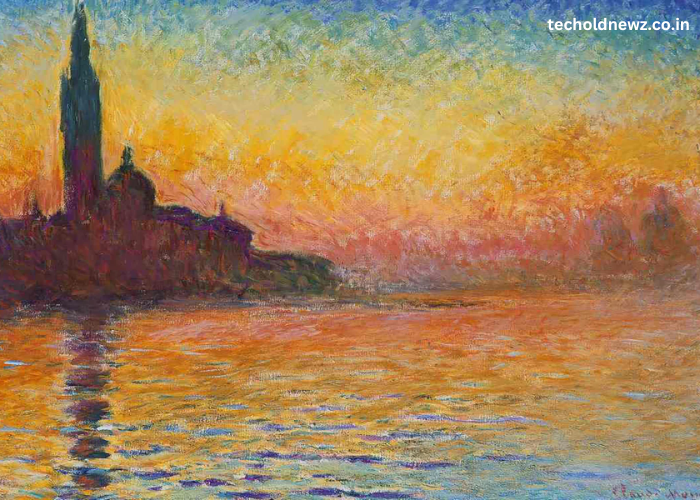Claude Monet, a pioneer of Impressionism, created some of the most iconic artworks in history. His paintings are known for their light, color, and nature themes. Let’s dive into his masterpieces, techniques, and artistic influence.
Key Points:
- Monet was a leading figure in the Impressionist movement.
- His paintings often captured nature’s changing moods.
- His art techniques revolutionized modern painting.
What Makes Monet Paintings Unique?
Monet’s paintings are unique because of their vibrant use of color and light. He painted the same subjects multiple times to capture different times of the day and seasons. For example, his “Water Lilies” series showcases reflections on water, creating a dreamlike effect.
Monet used short brushstrokes to blend colors and create a sense of movement. This style, called Impressionism, focused on painting quickly to capture the changing light. His painting, Impression, Sunrise, is what gave the entire art movement its name.
Note: Monet’s focus was on how light affects a scene, not on the objects themselves._
How Did Monet Influence Modern Art?
Monet’s techniques inspired many modern artists to explore new styles. His method of painting outdoors (en plein air) became a standard for landscape artists. Painters like Pierre-Auguste Renoir and Vincent van Gogh admired and adopted his techniques.
Monet’s bold use of color influenced abstract artists like Mark Rothko. His approach to light and reflection is seen in modern photography and cinema.
| Monet’s Influence | Impact on Modern Art |
|---|---|
| Impressionism | Inspired a new movement focused on light and color |
| Plein air painting | Popularized painting outdoor landscapes |
| Series painting | Influenced abstract and modern artists |
Reminder: Monet painted the same scene in different lighting to show nature’s changes._
Which Are The Most Famous Monet Paintings?
Monet created many masterpieces. Some of his most famous paintings include:
- Water Lilies Series: Over 250 paintings capturing his garden pond.
- Impression, Sunrise: The painting that named the Impressionist movement.
- Woman with a Parasol: A portrait of his wife and son outdoors.
These paintings are now displayed in famous museums worldwide, such as the Musée d’Orsay and the Museum of Modern Art (MoMA).
| Painting Name | Year | Location |
|---|---|---|
| Water Lilies Series | 1899+ | Musée de l’Orangerie, Paris |
| Impression, Sunrise | 1872 | Musée Marmottan Monet, Paris |
| Woman with a Parasol | 1875 | National Gallery of Art, Washington D.C. |
Why Are Monet Paintings Important In Art History?
Monet’s work was revolutionary because he broke traditional painting rules. Instead of realistic details, he painted feelings and impressions. His art was a response to the rapid industrial changes in 19th-century France.
Monet’s paintings preserved nature’s beauty, which was disappearing due to urbanization. His works are studied in art schools to teach color theory and brushwork techniques.
Art critics once mocked his style, but today, Monet’s works are priceless and celebrated.
Conclusion
Monet paintings are more than just art; they are a reflection of nature’s beauty and human emotion. Through his masterpieces, he reshaped the art world and inspired generations of artists. His legacy remains strong, making his paintings timeless treasures.
FAQ’s
1. What style of painting is Monet known for?
Monet is known for Impressionism, a style that captures light, color, and movement through quick brushstrokes.
2. Where can I see Monet paintings?
Monet’s paintings can be seen in museums like the Musée d’Orsay in Paris and the Museum of Modern Art in New York.
3. What is Monet’s most famous painting?
“Impression, Sunrise” is his most famous work, which named the Impressionist movement.
4. How did Monet change art?
Monet introduced a new way of painting outdoors and focused on light and color, inspiring modern artists.
5. Why did Monet paint the same subject multiple times?
He painted the same scene in different lighting conditions to show how light changes nature’s appearance.


